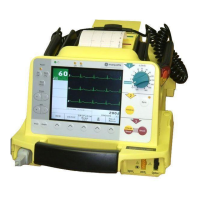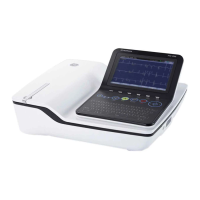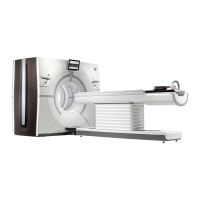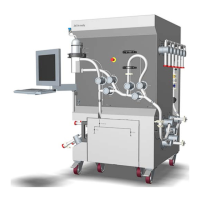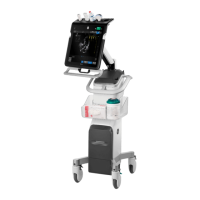2026116-001 Revision B Responder™ 2000 Page 68
NON-INVASIVE PACING (OPTION)
This section describes the noninvasive transcutaneous pacing option available with the Responder 2000 and describes
how to perform pacing.
Application and Functional Description
The transcutaneous pacemaker of the Responder 2000 is used for external (transchest) cardiac stimulation in
emergencies. It is applied temporarily in cases of acute arrhythmia, such as cardiac arrest or Stokes-Adams attacks.
Specific forms of bradycardia and tachycardia can also be treated with the pacemaker.
The pacemaker offers two modes of operation: demand and fixed-rate pacing (“Fix”).
The pacer pulses are delivered via the adhesive defibrillation electrodes (pace pads). Electrodes for adults and for
children can be used. Separate ECG electrodes must be applied for acquisition of the ECG signal.
WARNING: For treatment of patients with implantable devices such as permanent pacemakers or cardioverter
defibrillators, consult a physician and the instructions for use provided by the device’s manufacturer.
WARNING: Use demand mode pacing whenever possible. Use fixed mode pacing when motion artifact or other
ECG noise makes R-wave detection unreliable or when ECG monitoring electrodes are not available.
PRECAUTION: The maximum duration of pacing is recommended at one (1) hour. If patient condition requires prolonged
continuous pacing it is recommended that pads should be replaced to ensure maximum patient benefit. Prolonged pacing
particularly in neonates or adults with severely restricted blood flow, may cause burns. Periodic inspection of the
underlying skin is recommended.
PRECAUTION: Check that pad adhesive is intact and undamaged.
PRECAUTION: If the battery is removed while pacing and there is not AC Power, the pacing settings need to be re-set
when the battery is inserted again.
NOTE: The message “Please wait” will be displayed during the period when the Responder 2000 is not pacing,
because of change of lead. The Responder 2000 will not pace during this time.
WARNING: Shock Hazard
Due to their functional requirements, pacemakers operate with high voltages and are therefore equipped with specially
protected outputs. Nevertheless, it is important not to touch live contacts with conductive metal objects, such as tweezers,
as long as the pacemaker is operating. Currents exceeding 10µA may induce ventricular fibrillation,
if they flow through the heart. Observe the following sequence of operating steps when turning the pacemaker on and off.
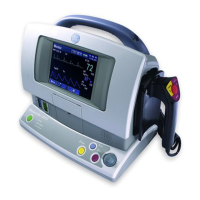
